SILVANA MOSSANO
Reportage udienza 28 marzo 2022
Si è concluso, lunedì 28 marzo, l’ascolto di famigliari – una novantina – delle 392 vittime dell’amianto, i cui nomi sono elencati nel capo di imputazione del processo Eternit Bis, che si svolge in Corte d’Assise a Novara.
Sono state testimonianze brevi, talora brevissime, per dire se c’erano o no tetti di amianto nelle case (e garage e pollai) dove avevano vissuto le vittime, se queste stesse o loro parenti avevano lavorato all’Eternit e ci si è concentrati per lo più su operai in attività nella fabbrica del Ronzone in epoche anteriori al 1976. Perché? Perché, lo ricordiamo, l’imputato Stephan Schmidheiny è chiamato a rispondere di quanto avvenuto nel decennio tra il 1976 e il 1986: prima non era formalmente gestore dell’Eternit, quindi non aveva responsabilità su eventuali condotte scorrette che risalgono agli anni precedenti. Obbiettivo della difesa: far passare il convincimento, o anche soltanto instillare il dubbio, che la diffusione delle fibre che ha causato le 392 morti di mesotelioma sia avvenuta al di fuori del periodo in cui l’imprenditore svizzero era titolare della cosiddetta «posizione di garanzia».
Le risposte, vista l’accurata, peraltro legittima, scelta dei testimoni da citare, erano quasi scontate; qualcuno, però, ha aggiunto con genuina spontaneità qualche elemento scomodo per la linea difensiva.
Naturalmente è soltanto una delle tesi su cui si concentrano i legali Astolfo Di Amato e Guido Carlo Alleva. Ci sono altri argomenti, su cui, tra l’altro, i difensori di Schmidheiny hanno già ampiamente argomentato il 23 marzo in Corte d’Assise a Napoli, dove si avvia a conclusione un altro filone dell’Eternit Bis, riferito a otto vittime legate all’attività nello stabilimento Eternit di Bagnoli.
* * *
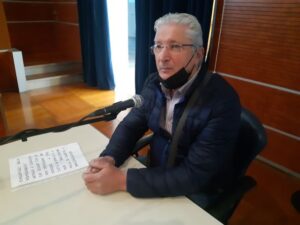
Francesco Rubino è stato chiamato a raccontare le abitudini in vita della madre Angela Mastroianni, morta di mesotelioma. La difesa si informa: dove ha abitato? «Per un po’ di anni in via XX Settembre, dopo in via del Turchino». I difensori non sono di Casale e, pertanto, non conoscono la toponomastica; quindi insistono: in via XX Settembre c’erano manufatti d’amianto? «Beh – sospira il testimone – c’era l’Eternit!». La fabbrica «era a cento metri da casa nostra, con un viavai di camion…». Per la difesa può bastare, l’interrogatorio può finire lì. Per il pm Gianfranco Colace no; domanda al testimone: ricorda bene lo stabilimento? «Ci ho pure lavorato, per un paio d’anni, ero ai Magazzini di stoccaggio in piazza d’Armi, però ogni tanto mi toccava andare anche fino allo stabilimento del Ronzone. Ricordo bene anche dove schiacciavano i tubi e altra roba, che poi venivano macinati…». Il pm incuriosito: ah, è il posto dove c’era la famosa ruspa? «Sì, sì, c’era la ruspa che schiacciava i rottami di eternit, su quel piazzale, dove adesso sorge l’asilo». Si vedeva la ruspa al lavoro? «E certo, era all’aperto!». Per caso, ricorda anche i ventoloni lungo il muro dello stabilimento? «Sì, giravano piano». Conosceva gli operai che lavoravano nello stabilimento? «Mah, non ricordo, io ci sono rimasto poco all’Eternit, poi ho trovato di meglio e sono scappato, c’era troppa polvere, avevo paura per la salute. Se ne sentiva di gente che andava a farsi visitare a Pavia perché gli mancava il fiato». Anche ai Magazzini di piazza d’Armi c’era polvere? «Era obbligata a esserci!». E le mascherine? «Niente mascherine». Esther Gatti, uno dei legali di parte civile, chiede di precisare bene: in che periodo è stato dipendente all’Eternit e ha visto queste cose? «Tra la metà del 1977 e il 1980».
Marisa Gasperin, sorella di Maria Cristina Gasperin. «Abitavamo in via Celoria». C’erano tetti di cemento-amianto? «Non lo ricordo, ma il cemento amianto era dappertutto». Sua sorella ha lavorato all’Eternit? «No, in una ditta di frigoriferi, faceva la contabile».
Luciano Liberalon figlio di Alberto Liberalon. «Mio padre ha abitato a Santa Maria del Tempio, poi al Rotondino, quattro anni a Padova e di nuovo a Casale». Il difensore domanda se nella cascina di Santa Maria del Tempio c’erano tetti di amianto: «Mah, io ero piccolo, non so dire». Il pm Colace invece si concentra sull’abitazione al Rotondino: era vicino all’Eternit? «Occhio e croce, 250 metri in linea d’aria». Lo stabilimento lo ricorda? «Sì, lo ricordo. E, sì, c’era polvere, specialmente di sera… io andavo al campo di calcio dietro la Canottieri, a giocare a pallone, e vedevo gli operai che uscivano in bicicletta, dalla strada si alzava la polvere…».
Carmelo Mangani, padre di Mirco Mangani. «Mio figlio faceva il muratore, con me. C’erano queste lastre di eternit, sposta di qua, sposta di là… Io ho 84 anni, e sono qua, ma mi è morto questo figlio Mirco. Ne ho pure perso un altro, di tumore. E’ tutto quello che ho da dire». Niente altro da dire. Se ne va, scuotendo la testa e appoggiandosi incerto al bastone.
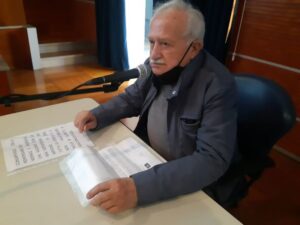
Sergio Borio, figlio di Maria Manoli. «Mia madre abitava in via Verona; quando ricordo io… no, non c’era il cortile di amianto, era di terra».
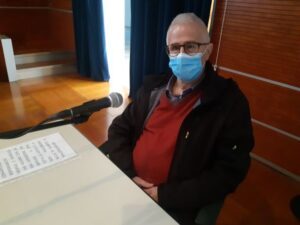
Claudio Baldin, vedovo di Adele Meneguz. «Mia moglie ha abitato in Salita Sant’Anna, poi a Casale Popolo e a Ticineto, nel 2010, quando ci siamo sposati, fino al 2014, quando è mancata. Suo padre, sì, lavorava all’Eternit. E a Casale Popolo un tetto di amianto c’era, mi disse che lo aveva fatto togliere nel 2000». Altro? Il pm Colace vuole sapere se lui ricorda lo stabilimento di Casale. «Sì. Io sono un chimico. Dopo la laurea, avevo ricevuto dall’ingegner Bontempelli (Ezio Bontempelli, igienista industriale, era a capo del laboratorio Sil – sigla per: Servizio Igiene e Lavoro – istituito al proprio interno dalla società Eternit, che coordinava i controlli in tutti gli stabilimenti in Italia, ndr) una proposta di lavoro. L’avevo incontrato in un ufficio, attiguo al laboratorio. Mi ha detto che la mia mansione sarebbe consistita nel controllare il deposito delle fibre nei filtri… Non so dire con maggiore precisione, perché in quel periodo stavo valutando un’altra opportunità di lavoro, all’ospedale Santo Spirito. Scelsi l’ospedale, sia per una questione economica e sia perché, a quell’epoca, si sentiva parlare di asbestosi tra chi lavorava all’Eternit. Di mesotelioma si è detto dopo, dagli anni ‘79/’80 in poi…». Ha conosciuto persone che si sono ammalate? «Sì, sì, a Casale si sa… In particolare, un mio amico, Franco Demichelis, che lavorava all’Eternit… e mia zia: lei non ha mai lavorato all’Eternit, ma suo marito sì».
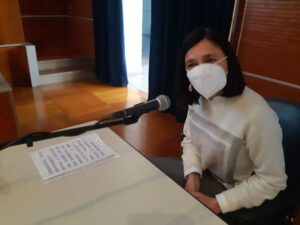
Isabella Cadin, vedova di Edoardo Montiglio. «Mio marito è vissuto in via del Carmine. C’era amianto? Non lo so. Noi ci siamo sposati nel 1996 e, prima, io abitavo in Friuli. Nella casa estiva a Terruggia? No, neppure lì, non saprei se ci fosse amianto. Mio marito aveva una farmacia, vicino all’ospedale». La casa e la farmacia erano vicino allo stabilimento Eternit? «Mah… cosa intende per “vicino”?» domanda perplessa. A Casale tutto è relativamente vicino. Riflette e risponde: «Distante no, forse un chilometro…».
Patrizia Patrucco, figlia di Renata Ottone. Molti suoi famigliari hanno lavorato all’Eternit: «Mio nonno, e anche mio papà, e mia zia, e una delle mie sorelle». Il pm si sofferma sul padre, marito di Renata Ottone: «E’ stato operaio fino all’85/86, al reparto tubi, poi purtroppo ha avuto problemi cardiaci e, proprio a causa dell’asbestosi dovuta all’amianto, non ha potuto fare tutte le cure che si dovevano fare. Sì, aveva l’asbestosi, ogni tanto andava ad Alessandria per controllare l’ “aggravamento”, poi a un certo punto non ci ha voluto andare più. La divisa di lavoro la portava a casa da lavare, così fino all’ultimo», cioè al 1986.
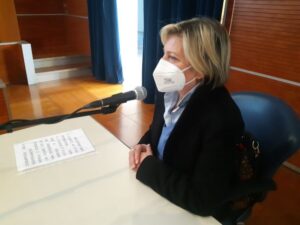
Lucia Botto, figlia di Mirella Padovani. «Nelle due case dove ha vissuto c’era amianto: in una il tetto di una rimessa, in un’altra raccontavano che fosse stato steso il polverino nel cortile, per renderlo compatto. Mia zia, sorella di mia madre, ha lavorato all’Eternit. Prima di sposarsi, sì, lei e mia mamma convivevano».
Piero Bocchio, figlio di Liliana Prete. «Mia madre è vissuta in via Luparia, in via Massaia, al Valentino. No, signore, non c’erano tetti di amianto. Faceva la pellicciaia, non ha mai usato l’amianto».
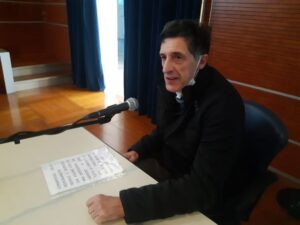
Mauro Santolli, figlio di Emilio Santolli. «Mio padre è sempre vissuto in via Visconti, lì c’era il deposito, cioè i Magazzini, dell’Eterni. E c’era pure il Dopolavoro Eternit, intitolato ad Adolfo Mazza (l’ingegnere che, nel 1907, acquistò il brevetto del materiale «eternit», inventato dall’austriaco Ludwig Hatscheck, e fondò a Casale il primo stabilimento in Italia, ndr)». «Mio padre operaio all’Eternit? No, mai, faceva il piastrellista e, poi, il bidello». La casa di via Visconti «era a dieci metri dal deposito Eternit di piazza d’Armi, oltre la strada. Abitavamo al terzo piano: io mi affacciavo e vedevo i silos, i tubi, le onduline, li spostavano con un muletto… Sono stati lì fino a quando i Magazzini sono stati smantellati». I Magazzini furono acquistati dal Comune di Casale dal fallimento Eternit (dichiarato nel 1986): l’acquisizione fu curata dall’assessore Paolo Ferraris, l’assessore Vincenzo Ottone avviò la progettazione di bonifica e l’assessore Gino Merlo la completò. La struttura è diventata sede del Polo Fieristico (cioè il Palafiere intitolato, nel 2018, all’ex sindaco Riccardo Coppo) e della multisala Cinelandia.
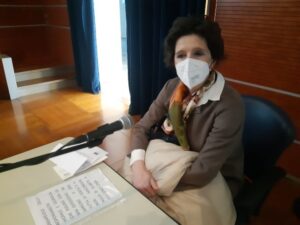
Giuliana Caprioglio, figlia di Angelo Caprioglio. «Mio padre è sempre vissuto a Roncaglia, ha lavorato alla ditta “Come” di San Maurizio, facevano cestelli per lavatrici. Nell’abitazione civile no, i tetti non erano di eternit, erano coppi. Nel ‘79/’80, invece, è stata costruita la stalla attigua alla casa e la copertura, sì, era di onduline».
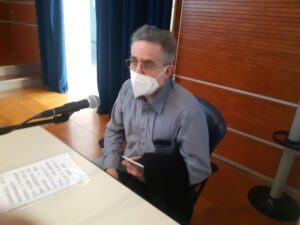
Paolo Gaia, figlio di Maria Scarrone. «Io avevo 5 anni e abitavamo in via Morera, al Ronzone. Poi, quando avevo 18 anni, ci siamo trasferiti a Cascine Rossi di Santa Maria del Tempio. La nostra casa di via Morera non era distante dallo stabilimento, era sull’altro lato del canale. Sì che la ricordo la fabbrica, perché da bambini andavamo in bicicletta alla diga e ci passavamo sempre vicino, e si andava anche alla fontana “La Morana”, che pure era da quelle parti». E c’era polvere? «Sì, polvere ce n’era, l’erba era bianca di polvere». La pm Mariagiovanna Compare s’informa: in che periodo? «Almeno dal ’74 al ’79; poi, a 15 anni, sono andato a lavorare e… i giochi sono finiti».
Maura Salvaneschi, figlia di Albina Schiavolin. «Mia mamma è nata ad Altavilla, ma è sempre vissuta a Casale. Nella casa di via Bassano del Grappa il tetto era di eternit… c’erano tanti tetti d’eternit dappertutto…».
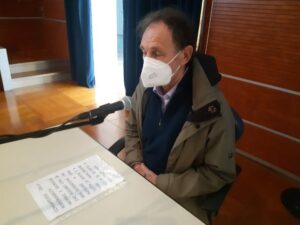
Gianni Allegro, figlio di Arcangela Spallazzo. «Mia madre era casalinga, mio padre autotrasportatore di cemento: non ho mai sentito che facesse consegne all’Eternit. La casa era in via Crova». Coperture di eternit? «Nel 2005 furono smantellati tetti di una rimessa nel cortile di fianco dove anche i miei genitori avevano il garage».
Roberta Lazzarini, vedova di Loris Zanabon. «Mio marito è vissuto in via Trieste, via Fiume, via Trino, corso Valentino, via Morera, via Ottolenghi e anche via Gabrielli, di fianco all’area ex Piemontese (dove avveniva la frantumazione a cielo aperto di rottami, ndr); io, lì, ci ho abitato dal 1991, vedevo, allora, un edificio mezzo demolito con il tetto di eternit, circondato da boscaglia». Che lavoro faceva suo marito? «Montava mobili e, poi, antenne, bucava tetti e anche pannelli isolanti che contenevano amianto».
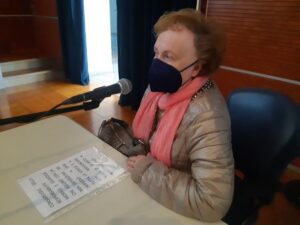
Maria Grazia Patrucco, figlia di Olga Bertolotti. «Mia mamma abitava in una casa indipendente a San Germano: c’era il poverino nel cortile e sul ponte di accesso alla statale, e pure le onduline sul tetto del garage».
* * *
Prossima udienza
Lunedì 4 aprile, a Novara, saranno esaminati due consulenti citati dalla difesa su tematiche contabili.
Processo a Napoli
Nel filone processuale Eternit Bis che si svolge a Napoli (per 8 morti di Bagnoli – 6 lavoratori e 2 famigliari -, omologo di quello che si svolge a Novara, per 392 morti di Casale e dintorni), i difensori Astolfo Di Amato e Guido Carlo Alleva hanno invocato l’assoluzione dell’imputato Stephan Schmidheiny, esponendo diverse argomentazioni a discolpa. Hanno insistito sulla consapevolezza reale dei rischi negli anni Settanta, di portata diversa da quella attuale: «Nel 1976, in un momento in cui tutti erano convinti che non fosse necessario vietare l’amianto, Schmidheiny chiama i suoi dirigenti e dice che per continuare a lavorare occorre rispettare anche la salute dei lavoratori: altre aziende non l’hanno fatto». Altro tema sostenuto dalla difesa: la non volontà da parte dell’imprenditore di accettare l’evento morte delle vittime (quindi esclusione del dolo). E, ancora, l’incertezza di stabilire il momento preciso in cui, dopo l’inalazione della fibra, è iniziata la cosiddetta fase di induzione: «Non sappiamo quanto tempo ci mette la fibra inalata ad arrivare nei polmoni ed avviare il processo tumorale»: è la fase che va dall’esposizione all’amianto al successivo insediamento invisibile del tumore, la cosiddetta «induzione». I legali ritengono che questo tempo non si possa calcolare e, pertanto, non sia possibile attribuire a Schmidheiny la responsabilità delle malattie e delle morti conseguenti: «E’ un problema non risolvibile».
I pubblici ministeri Giuliana Giuliano e Anna Frasca hanno invece chiesto la condanna a 23 anni e 11 mesi. Nella loro requisitoria hanno evidenziato, tra l’altro, lo «stato fatiscente» in cui versava lo stabilimento di Bagnoli: «Erano stati fatti investimenti finalizzati alla produttività dello stabilimento, che, come conseguenza, riducevano anche la diffusione delle fibre», ma hanno riferito i pubblici ministeri richiamando testimonianze di dirigenti di primo livello dell’Eternit, «non vennero fatte spese per la manutenzione: c’era una polverosità esagerata!». Si sono poi soffermati sulle conoscenze effettive di Schmidheiny: «da buon imprenditore correttamente ha visitato gli stabilimenti e sa, come ha testimoniato suo fratello Thomas, che l’amianto è da togliere. Ne parlavano persino in casa, con il padre». La pubblica accusa ha, infine, stigmatizzato il comportamento processuale dell’imputato: «E’ legittimo difendersi, certo, ma Schmidheiny non ha mai espresso un sentimento di pietas, mai una parola di vicinanza ai famigliari delle vittime».
Tra le parti civili, è intervenuta anche l’avvocato Laura D’Amico, in rappresentanza dell’Afeva di Casale (che tutela anche nel processo Eternit Bis di Torino), per sottolineare il ruolo dell’associazione che si è mobilitata fin dalla sua costituzione negli anni Ottanta stabilendo relazioni e rapporti con altri gruppi omologhi in Italia e nel mondo, e si è molto battuta per la messa al bando dell’amianto, concretizzata con la legge del 1992.
Prossima udienza a Napoli mercoledì 6 aprile: sono previste brevi repliche e la Corte d’Assise, presieduta da Concetta Cristiano, potrebbe già emettere in quella data il verdetto.
* * *
Translation by Vicky Franzinetti
Eternit March the 28th , 2022 Hearing
By Silvana MOSSANO
On Monday, March 28, the last of the family members (c 90) of the 392 victims of asbestos, were heard at the Eternit Bis trial, held in the Court of Assizes in Novara.
Short – at times very short – testimonies, answering questions as to whether or not there were asbestos roofs on their houses and/or garages and chicken coops, if they or their relatives had worked at Eternit mostly at the Ronzone plant before 1976. Why focus on these issues? Because, as we know, the defendant Stephan Schmidheiny is called to answer for what happened in the decade between 1976 and 1986: before that he was not formally the manager of Eternit, therefore he has no responsibility for any misconduct dating back to previous years. The aim of the defense: to introduce the idea, or even just instill the question, that the fibers that caused the 392 deaths from mesothelioma occurred some other time, not in the period for which the Swiss entrepreneur is liable (posizione di garanzia).
Given the careful and legitimate choice of witnesses called by the defense, the answers were obvious; however, some added inconvenient elements for the defense and did so spontaneously.
This is only one of the theses which defense lawyers Astolfo Di Amato and Guido Carlo Alleva raise such as the ones Schmidheiny’s defense already argued extensively on March 23rd in the Court of Assizes in Naples, where another Eternit Bis case is being heard. That case is for six workers of Bagnoli Eternit plant and 2 members of the community. The Naples case is soon to reach a verdict.
* * *
Francesco Rubino spoke about his mother Angela Mastroianni, who died of mesothelioma describing her life. The defense asked where she lived: “For a few years in Via XX Settembre, later in Via del Turchino”. The defense lawyers are not from Casale and, therefore, do not know where the streets are. As a result they insisted: were there asbestos artifacts in Via XX Settembre? “Well – sighed the witness – that was where the Eternit plant was! A hundred meters from our house, trucks coming and going, to and fro…”. The defense had no more questions, it could end there. For Dr Gianfranco Colace, the Prosecutor, there was more; he asked the witness: “Do you remember the plant?” “I worked there for a couple of years, I was at the Storage Warehouses in Piazza d’Armi, but sometimes I had to go to the Ronzone Plant. I also remember well where they crushed pipes and other stuff, which were left scattered on the ground…”. The Prosecutor asked more questions: “Is that the place where the famous bulldozer was?” “Yes, yes, there was the bulldozer that crushed the asbestos waste, on that square, where the kindergarten is now “. “Did you ever see the bulldozer at work?” “Sure, it was out in the open!”. “By chance, do you also remember the fans along the wall of the plant?” “Yes, they turned very slowly.” “Did you know the workers who worked in the plant?” “Well, I don’t remember, I worked at Eternit for a short time, then I found something better and I ran away, there was too much dust, I was afraid for my health. We used to hear of people who went to the Pavia [Hospital] to be examined because they were out of breath”. “Was there dust at the warehouses in Piazza d’Armi too? ” “Of course it was inevitable!” “And what about masks?” “No masks.” Esther Gatti, one of the plaintiffs’ lawyers, asked for more details: “When were you employed at Eternit, when did you see these things?” “Between mid-1977 and 1980.”
Marisa Gasperin, sister of Maria Cristina Gasperin. “We lived in Via Celoria”. “Were there an asbestos cement roofs?” “I don’t remember, but asbestos cement was everywhere.” “Did your sister work at Eternit? “No, in a fridge manufacturer, she was an accountant”.
Luciano Liberalon son of Alberto Liberalon. “My father lived in Santa Maria del Tempio, then at Rotondino, four years in Padova and again in Casale”. The defense lawyers asked if there were asbestos roofs in the farmhouse of Santa Maria del Tempio: “Well, I was very young, a child, I can’t say”. Prosecutor Colace instead focused on the house at Rotondino: was it close to Eternit? “Roughly 250 meters as the crow flies”. “Do you remember the plant?” “Yes, I remember it. And, yes, there was dust, especially in the evening… I used to go to the soccer field behind the Canottieri, to play soccer, and I would see the workers coming out on their bikes, dust would rise from the street…”.
Carmelo Mangani, father of Mirco Mangani. “My son was a bricklayer like me and we worked together. There were asbestos sheets that had to be moved around… I’m 84 years old, and I’m here, but my son Mirco is dead. I also lost another child, to cancer. That’s all I have to say.” Nothing else left to say. He leaves, shaking his head and leaning on his cane.
Sergio Borio, son of Maria Manoli. “My mother lived on Via Verona; when I remember… no, there was no asbestos yard, it was just plain soil.”
Claudio Baldin, widower of Adele Meneguz. “My wife lived in Salita Sant’Anna, then in Casale Popolo and in Ticineto, in 2010, when we got married, until 2014, when she passed away. Yes, her father had worked at Eternit. And in Casale Popolo there was an asbestos roof, he told me he had it removed in 2000.” Anything else? Dr Colace wants to know if he remembers the Casale Plant. “I do. I am a chemist. After graduation, I had received a job offer from engineer Bontempelli [Ezio Bontempelli, industrial hygienist, was head of the Sil laboratory, Servizio Igiene e Lavoro — Hygiene and Labor Service — set up by the Eternit Company, which coordinated monitoring in all plants in Italy]. I met him in an office next to the lab. He told me that my job would be to check the deposit of fibers in the filters… I cannot say more precisely, because at that time I was considering another job opportunity, at the Santo Spirito Hospital. I chose the hospital, both for financial reasons and because, at that time, there was talk of asbestosis among those who worked at Eternit. Mesothelioma was mentioned later, from the 1979-1980s onwards…”. “Did you know any other people who developed the disease? “Yes, yes, in Casale it is known… In particular, a friend of mine, Franco Demichelis, who worked at Eternit… and my aunt: she never worked at Eternit, but her husband did.”
Isabella Cadin, widow of Edoardo Montiglio. “My husband lived in Via del Carmine”. “Was there asbestos? I don’t know. We got married in 1996 and, before that, I lived in Friuli”. “What about your holiday home in Terruggia?” “No, not even there, I don’t know of any asbestos. My husband had a pharmacy, near the hospital”. Were the house and the pharmacy close to the Eternit plant? “Well… what do you mean by ‘close’?” she asks looking puzzled. Everything in Casale is relatively close. She thinks and answers: “Not far, maybe a kilometer…”.
Patrizia Patrucco, Renata Ottone’s daughter. Many of her family members worked at Eternit: “My grandfather, my father, and my aunt, and one of my sisters”. The Prosecution focuses on her father, Renata Ottone’s husband: “He worked there 1985-86, at the pipe workshop, then unfortunately he had heart problems and, because of asbestosis, he could not undergo all the treatments that were required. Yes, he suffered from asbestosis, every now and then he went to Alessandria to monitor the progress of the disease then at a certain point he didn’t want to go anymore. He took his work uniform home to be washed, until the very end”, in 1986.
Lucia Botto, daughter of Mirella Padovani. “There was asbestos in the two houses where she lived: in one the roof of a shed, in another they said that powder had been spread in the courtyard, to make it compact. “My aunt, my mother’s sister, worked at Eternit. Before getting married, yes, she and my mother shared a house”.
Piero Bocchio, son of Liliana Prete. “My mother lived in Via Luparia, in Via Massaia, in Valentino. No, sir, there were no asbestos roofs. She was a furrier, she never used asbestos.”
Mauro Santolli, son of Emilio Santolli. “My father lived in Via Visconti all his life, there was the warehouse, that is, the Eternit warehouses. And there was also the Dopolavoro Eternit (the Workers’ Social Club), named after Adolfo Mazza [the engineer who bought the patent of the “eternit” in 1907, invented by the Austrian Ludwig Hatscheck, and established the first plant in Italy, in Casale]”. “Was your father an asbestos worker?” “No, never, he was a tiler”. The house in Via Visconti “was ten meters from the Eternit warehouse, which was the other side of the road. We lived on the third floor: I looked out and saw the silos, the pipes, the corrugations, they moved them with a forklift… They were there until the warehouses were dismantled”. The warehouses were purchased by the City of Casale in the bankruptcy proceedings in 1986: the acquisition was overseen by Councillor Paolo Ferraris, Councillor Vincenzo Ottone started the reclamation project and Councillor Gino Merlo completed it. The facility now houses Polo Fieristico (the Fair and Exhbition Center i.e. the Palafiere that in 2018 was named after former mayor Riccardo Coppo) and Cinelandia (multiplex cinema).
Giuliana Caprioglio, daughter of Angelo Caprioglio. “My father has always lived in Roncaglia, he worked at the company “Come” in San Maurizio, they made washing machine drums. Their roof was not made of Eternit, they were tiled. In 1979/80, a stable was built next to the house and the roof was made of corrugated iron.
Paolo Gaia, son of Maria Scarrone. “I was 5 years old and we lived in via Morera, at Ronzone. Then, when I was 18, we moved to Cascine Rossi in Santa Maria del Tempio. Our house on Via Morera was not far from the plant, it was on the other side of the canal. Yes, I remember the factory, because as children we used to ride our bikes to the dam and we always cycled by it. We also used to go to the “La Morana” fountain, which was also near there”. And was there dust? “Yes, there was dust, the grass was white with dust”. Prosecutor Mariagiovanna Compare inquires: when was that? “At least from 1974 to 1979; then, when I was 15, I went to work and… had no time for play and games.”
Maura Salvaneschi, daughter of Albina Schiavolin. “My mom was born in Altavilla, but she always lived in Casale. In the house on Via Bassano del Grappa, the roof was made of Eternit… there were many Eternit roofs everywhere…”.
Gianni Allegro, son of Arcangela Spallazzo. “My mother was a housewife, my father a cement hauler: I never heard that he made deliveries to Eternit. Their house was on Via Crova.” Eternit roofs? “In 2005 they dismantled the roofs of a shed in the courtyard next door where my parents also had their garage”.
Roberta Lazzarini, widow of Loris Zanabon. “My husband lived in via Trieste, via Fiume, via Trino, corso Valentino, via Morera, via Ottolenghi and also via Gabrielli, next to the former Piemontese area [where the open-air crushing of scrap metal took place, editor’s note]; I have lived there since 1991, I could see, at that time, a half-demolished building with an Eternit roof, surrounded by bushes”. What did your husband do for a living? “He assembled furniture and, then, aerials, mended roofs and also insulating panels that contained asbestos.”
Maria Grazia Patrucco, daughter of Olga Bertolotti. “My mother lived in a detached house in San Germano: there was the dust in the yard and on the bridge leading to the state highway, and also the corrugated roofs on the garage.”
* * *
Next hearing
On Monday, April 4, two defense expert witnesses (accounts and balances) will be heard.
Naples Trial
In the Eternit Bis trial in Naples (for 8 deaths in Bagnoli – 6 workers and 2 family members -, the same as the one taking place in Novara, for 392 deaths in Casale and its surroundings), defense lawyers Astolfo Di Amato and Guido Carlo Alleva asked for the acquittal of the defendant Stephan Schmidheiny, putting forward various arguments in his defense. They insisted on the actual awareness of risks known in the Nineteen Seventies, “completely different from the current one: in 1976, at a time when everyone was convinced that it was not necessary to ban asbestos, Schmidheiny called his managers and said that workers’ health had to be protected to continue working: other companies did not”. Another one of their arguments: the entrepreneur’s lack of intention for the death of the victims [therefore no willfulness]. And, again, the uncertainty of establishing the precise moment in which, after the inhalation of the fiber, the so-called induction phase began: “We do not know how long it takes the fiber inhaled to arrive in the lungs and start the cancer growth: it is the phase that goes from exposure to asbestos to the next invisible development of the tumor, the so-called “induction”. The defense lawyers maintain that this time cannot be calculated and, therefore, it is not possible to attribute to Schmidheiny the responsibility of the illnesses and consequent deaths: “It is an insoluble matter” they concluded.
The Public Prosecutors Giuliana Giuliano and Anna Frasca asked for a 23 years and 11 months sentence. In their indictment among other things, they highlighted the “dilapidated state” of the Bagnoli plant: “Investments had been made aimed at the productivity of the plant, which, as a result, also reduced the spread of fibers”, but prosecutors recalling testimonies of top-level managers of Eternit, “no expenses were earmarked for maintenance: there was an incredible amount of dust!” They then spoke about Schmidheiny’s actual knowledge: “as a good entrepreneur he rightly visited the plants and knew, as his brother Thomas testified, that asbestos had to be removed. They even talked about it at home, with his father”. The public prosecutor, finally, stigmatized the defendant’s trial behavior: “It ‘s legitimate to defend one’s self, but Schmidheiny has never expressed any pity, never a word of sympathy to the families of the victims”.
Plaintiffs’ lawyer Laura D’Amico representing the Victims’ Association, Afeva of Casale (also present in the Turin Eternit Bis trial), spoke underlying the role of the association, which has been active since its establishment in the 1980s, and of its relations with other similar groups in Italy and in the world, fighting to ban asbestos, which happened in 1992.
The next hearing will take place in Naples on Wednesday, April the 6th : brief replies are expected and the Assize Court, presided by Dr Concetta Cristiano, could deliver its verdict on that date.
Eternit Bis: «Se ho visto la ruspa che frantumava rottami al Ronzone? Certo, era a cielo aperto»

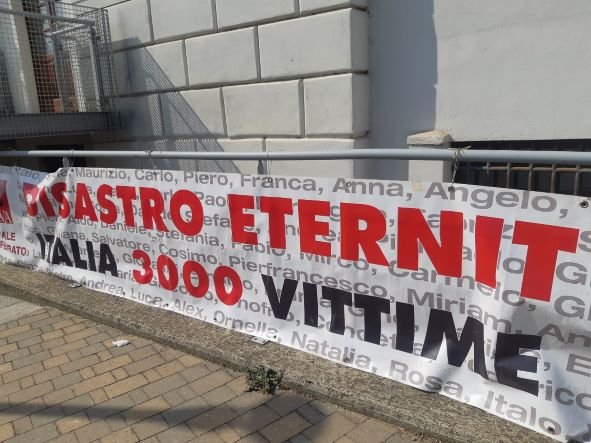
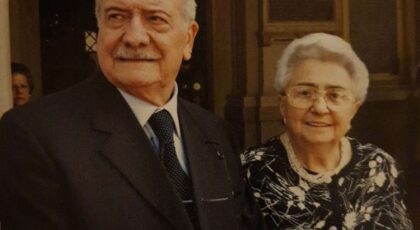
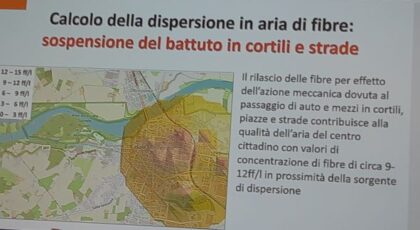
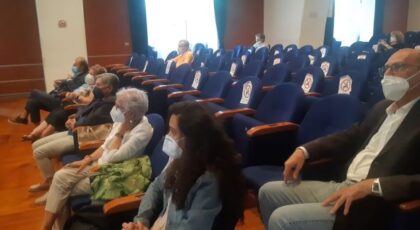
Grazie come sempre . Tante testimonianze e a senso Unico . Auguriamoci che la Giustizia quella terrena prenda e arrivi al “Punto” GIUSTO.
Grazie tante Silvana!!!
Anche stavolta le chiamate di testi da parte della difesa non gli è andata tanto bene….
Complimenti Silvana per il tuo tenace impegno! Speriamo che vinca la verità!